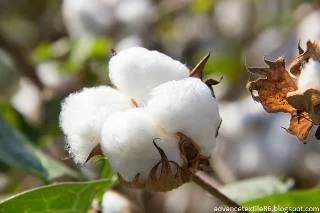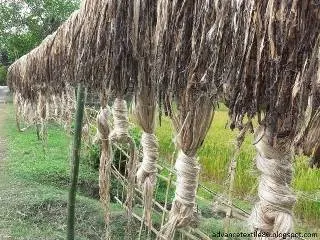Bast fiber
Bast
fiber is planted fibers that are collected from the phloem surrounding the
stems of certain plants. It supports the phloem conductive cells and provides
strength to the stem. Some economically important bast fibers are obtained from
agriculturally grown shrubs such as flax, hemp, or ramie, but bast fiber from
wild plants, stinging nettles, and lime or linden, wisteria, and mulberry trees
have been used in the past. Bast fibers are classified as soft and flexible
fibers. Fibers from the monocotyledonous plant, known as leaf fibers, are
classified as hard fibers.
Cotton
Cotton
is the number one best usable fiber which is the flexible, fluffy, breathable,
staple fiber that grows in a boll or protective field, around the seeds of the
cotton plant of the Gossypium genus of the Mallow family Malvaceae. The fiber
is almost pure cellulose. Under natural conditions, cotton balls will scatter
the seeds. Hybrid varieties are also cultivated. The two New World species
cotton varieties are modern cotton production, but the two Old World varieties
were widely used before the 1900s. While cotton fibers are found naturally in
white, brown, pink, and green, the fear of contamination of the genetics of
white cotton has led many cotton-growing areas to ban the growth of colored
cotton varieties.
Maximum
cotton in Europe, the United States, and Australia is harvested mechanically,
either by a cotton picker, a machine that removes the cotton without damaging
the cotton plant or by a cotton stripper that cuts the whole ball from the
plant. Cotton stickers are used in areas where cotton varieties are windier
than cotton and usually after the use of a chemical defoliant or natural
defoliation that occurs after freezing. Cotton is a perennial tropical crop,
and the plant will continue to grow without deflation or freezing. Cotton is
used to make many textile products. The fiber is often cut into yarn or thread
and used to make soft, breathable textiles. Terrycloth for highly absorbent
bath towels and clothing; Denim for blue jeans; Popularly used in making
cambric, blue work shirts and corduroy, serrated and cotton towels. Socks,
underwear, and most T-shirts are made of cotton.
Jute
Jute
is a long, soft, shiny bast fiber that can be spun into thick, strong threads.
It is produced from the flowering plant of the genus Corchorus which is a member
of the Mallow family. Jute has been used for making textiles in the Indus
Valley Civilization since the third millennium BC. These fibers are mainly
composed of plant materials cellulose and lignin. Its plants require simple
alluvial soils and standing water. The climate suitable for growing jute is
provided by the monsoon climate during the monsoon season. Soft water is
required for jute production. Jute fiber comes from the stems and ribbons of
jute trees. The fibers are first extracted retting. The retting process bundles
the jute stems together and slowly immerses them in running water. Rettings are of two types stem and ribbon. At the end of the retting process, the stripping
begins; women and children usually do this. In the stripping process, the
non-fibrous material is cut, then the workers dig and grab the fibers from the
inside of the jute stem. Due to its versatility, jute is the second most
important vegetable fiber after cotton. It is also called golden fiber for its
color and high cash value. It is mainly used for wrapping raw cotton yarn and
for making cloth into sacks and coarse cloth. The fibers are also woven into
curtains, chair covers, carpets, area rugs, hessian fabrics, and backing for
linoleum.
Jutton
Jutton
is a kind of fabric made from a mixture of jute and cotton fibers. The process
involves blending jute and cotton fibers in certain proportions to create new
types of textile products that can serve as an alternative to cotton textiles.
Similar techniques have been adopted for blending jute with other synthetic and
natural fibers. In 1970, scientists at the Bangladesh Jute Research Institute
invented a wide range of jutton products. The products that are produced by
Jutton are- printed, colored, and simple white clothing of various shades,
colors, and designs; Lungi, sari, towels, various upholstery items, bed sheets,
bedding, and other decorative products; And other forms of shirts, trousers,
coats, and clothing. These products were technically substantial enough. After
the production of yarn, fabrications were made using looms and electric looms.
However, the products were unprofitable due to the high cost of production due
to their involvement in various treatments.












0 Comments